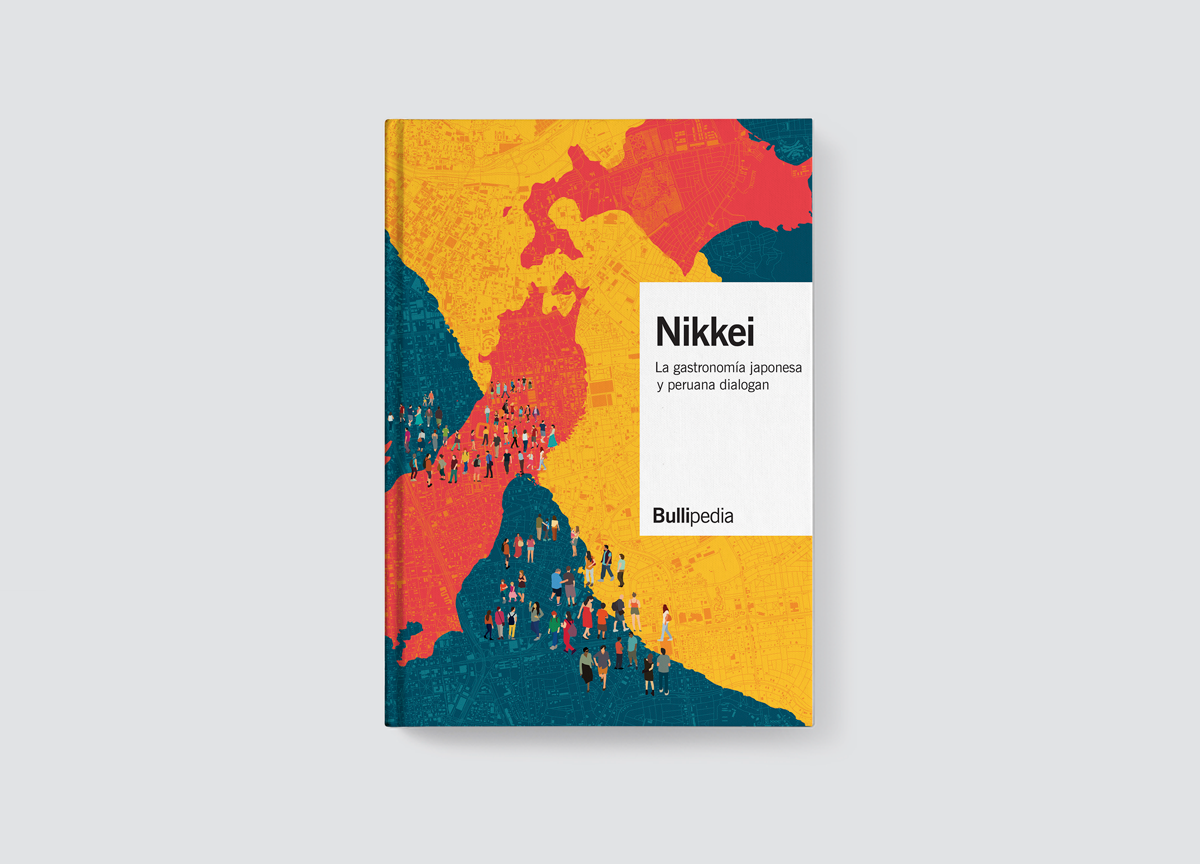Nikkei. La gastronomía japonesa y peruana dialogan
Nikkei. Japanese and Peruvian cuisine in dialogue, exploring the unique fusion called Nikkei cuisine, is the first book in the Bullipedia collection dedicated to a specialist topic. The result of extensive research by the Peruvian graphic designer and chef María José García Miró, and applying the Sapiens methodology – devised by Ferran Adrià and the elBullifoundation team – to analyse this culinary style in depth. Supervision and further contributions to the development of this work have been carried out by Ferran Adrià and his team.
448 pages
230 x 330 mm
Hard cover
ISBN: 978-84-09-08867-6

This work examines the specific characteristics of Nikkei cuisine, illustrating why it has become so in vogue despite not being particularly well known.
Through the use of images and concept maps to facilitate understanding, the book investigates whether Nikkei cuisine belongs to popular cuisine or if it can be conceived of as culinary art. Amongst numerous other themes explored, we look at who the pioneers of this cuisine are, what place it occupies culturally, how it is perceived in the East and how this gastronomic dialogue between Japan and Peru came about.
The book deals with the history of the cuisine, its lexicon, the products and tools used, the specific techniques that aided its development, and the final elaborations that we can savour. Nikkei also introduces the reader to the gastronomic experience of the cuisine and to all the different elements that comprise it, such as the smells, the flavours, the decoration and ambience of the setting, the music and presentation of the dishes, along with the rapport of waiters with the diners. All these elements, allied to the gastronomic experience itself, produce a unique sensation.
The final objective of this work is to analyse the current success of this cuisine, to examine and arrive at a clear idea of what Nikkei is.
“The dialogue between Japanese and Peruvian cuisine. When this dialogue takes place outside these two countries, it sometimes invites a contribution from others.”
In this section is a short summary of each chapter of the book
Download in PDF
INTRODUCTION
THE SAPIENS OF NIKKEI CUISINE
Continue reading >

CHAPTER 1
THE DEFINING ASPECTS OF NIKKEI CUISINE
Continue reading >

CHAPTER 2
THE GASTRONOMIC RESOURCES OF NIKKEI CUISINE
Continue reading >

CHAPTER 3
EXPERIENCING NIKKEI CUISINE
Continue reading >

ANNEX 1
NIKKEI RECIPES
Continue reading >

ANNEX 2
NIKKEI REFERENCE BOOKS
Continue reading >

A unique cuisine born from the marriage of cultures: at the end of the 19th century Japanese immigrants arrived in Peru and thanks to the intermixing of ingredients and customs a new gastronomic style was born. Around 1980, this fusion was formalised with the coining of the term Nikkei. María José García Miró, cook and designer, investigates the evidence and determines what Nikkei cuisine is and just how fruitful this culinary marriage has been. The sixth volume of Bullipedia and another fine addition to any bookshelf.
Pau Arenós - La cocina de los valientes

Now Bullipedia publishes (via RBA) this excellent volume about the fusion between Japanese and Peruvian cuisine that has brought us so much gustatory pleasure. This work, which follows the Sapiens method, examines the evolution of this culinary style and then focuses on those who created it – Minoru Kunigami, Rosita Yimura, Augusto Kawe, Nobuyuki Matsuhisha ‘Nobu’ – and those who continue to prepare it with the greatest care – Mitsuharu Tsumura ‘Micha’, Diego Oka, Luis Arévalo and Albert Adrià, investigating in depth its ingredients and recipes. Indispensable.
7 Canibales - Pilar Sala

This work enables the reader to find out the specifics of Nikkei cuisine… a culinary style that has turned into a world-wide trend whilst being largely unknown. Accompanied by images and concept maps to aid understanding, the volume investigates whether Nikkei cuisine belongs to popular cuisine or if it can be conceived of as culinary art. Amongst numerous other themes explored, it also looks at who the pioneers of this cuisine are, what place it occupies culturally, how it is perceived in the East and how this gastronomic dialogue between Japan and Peru came about.
The cook and the Wine
































